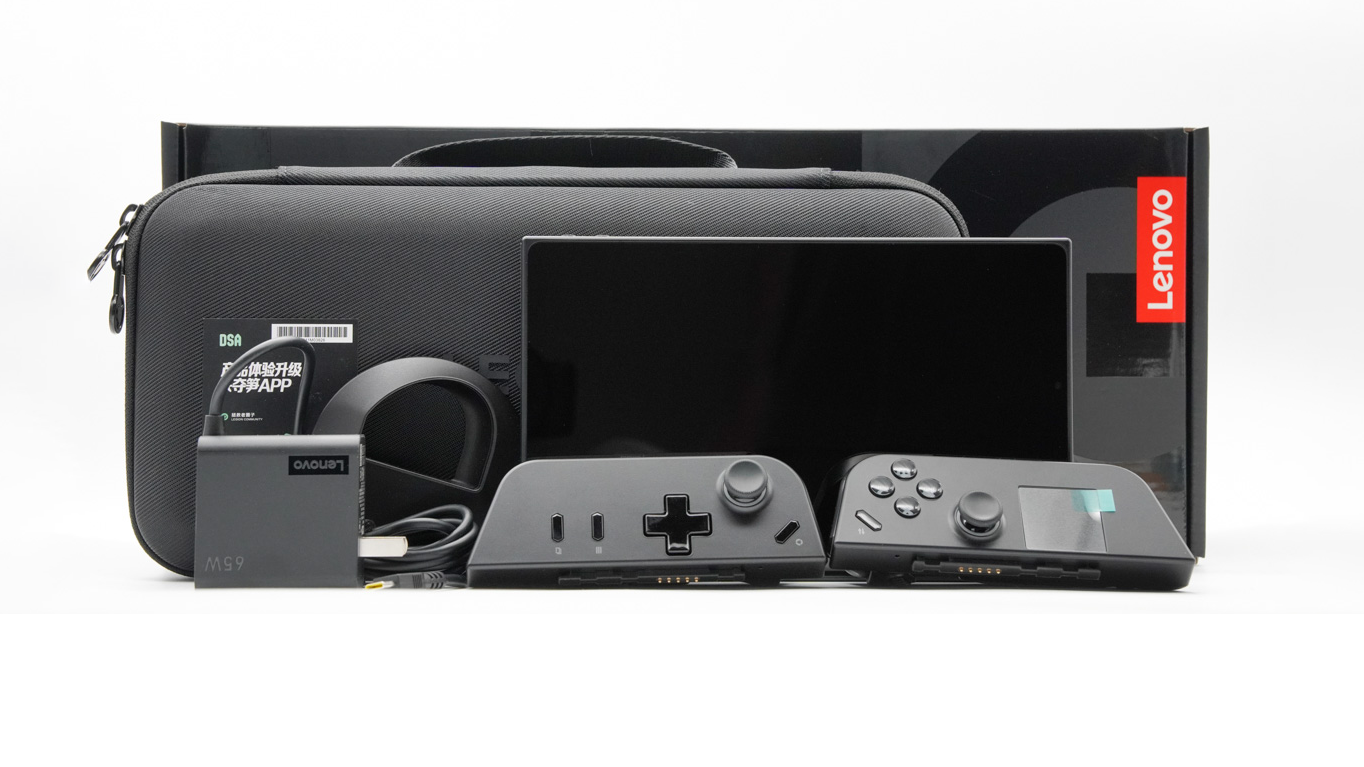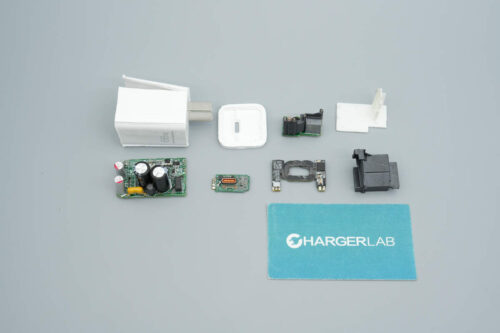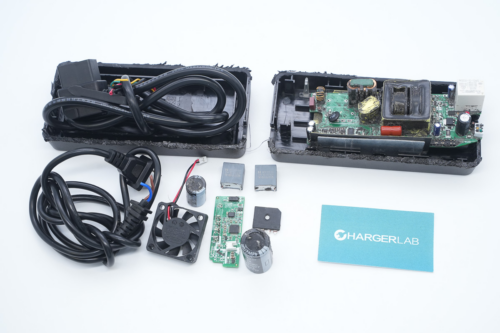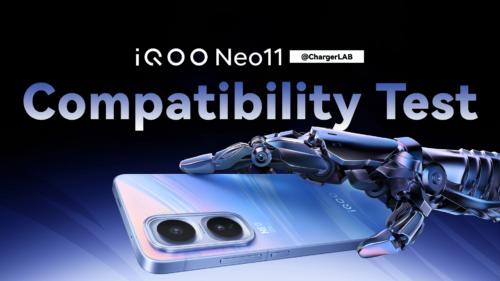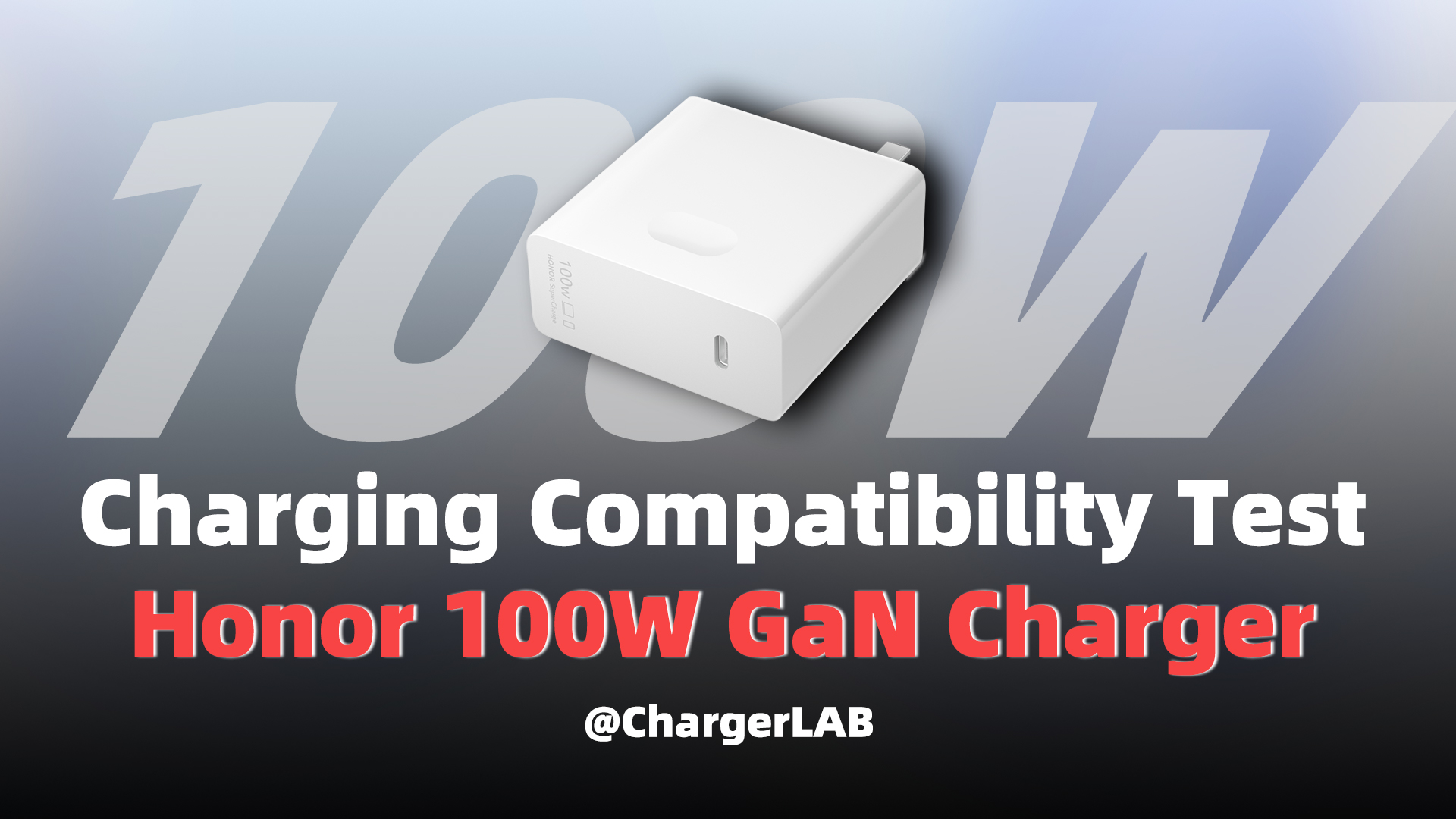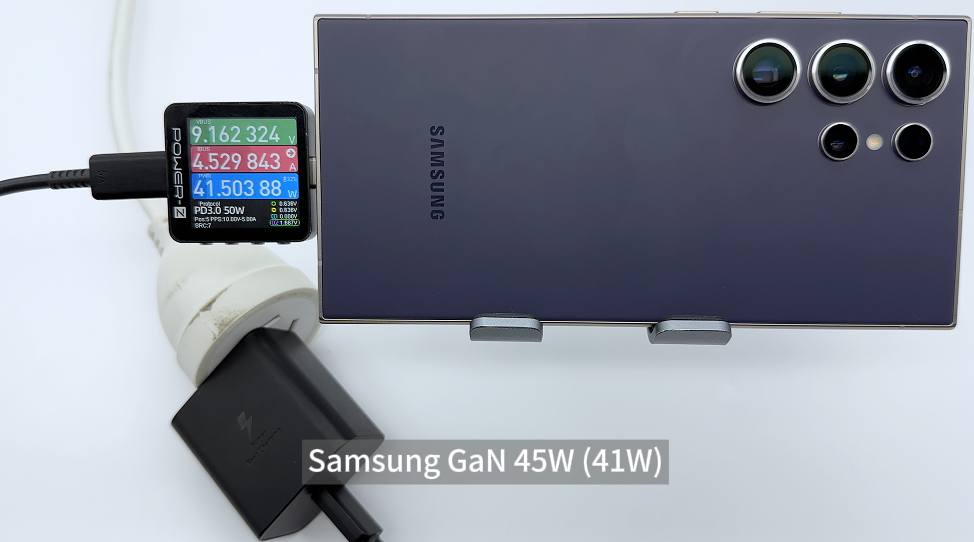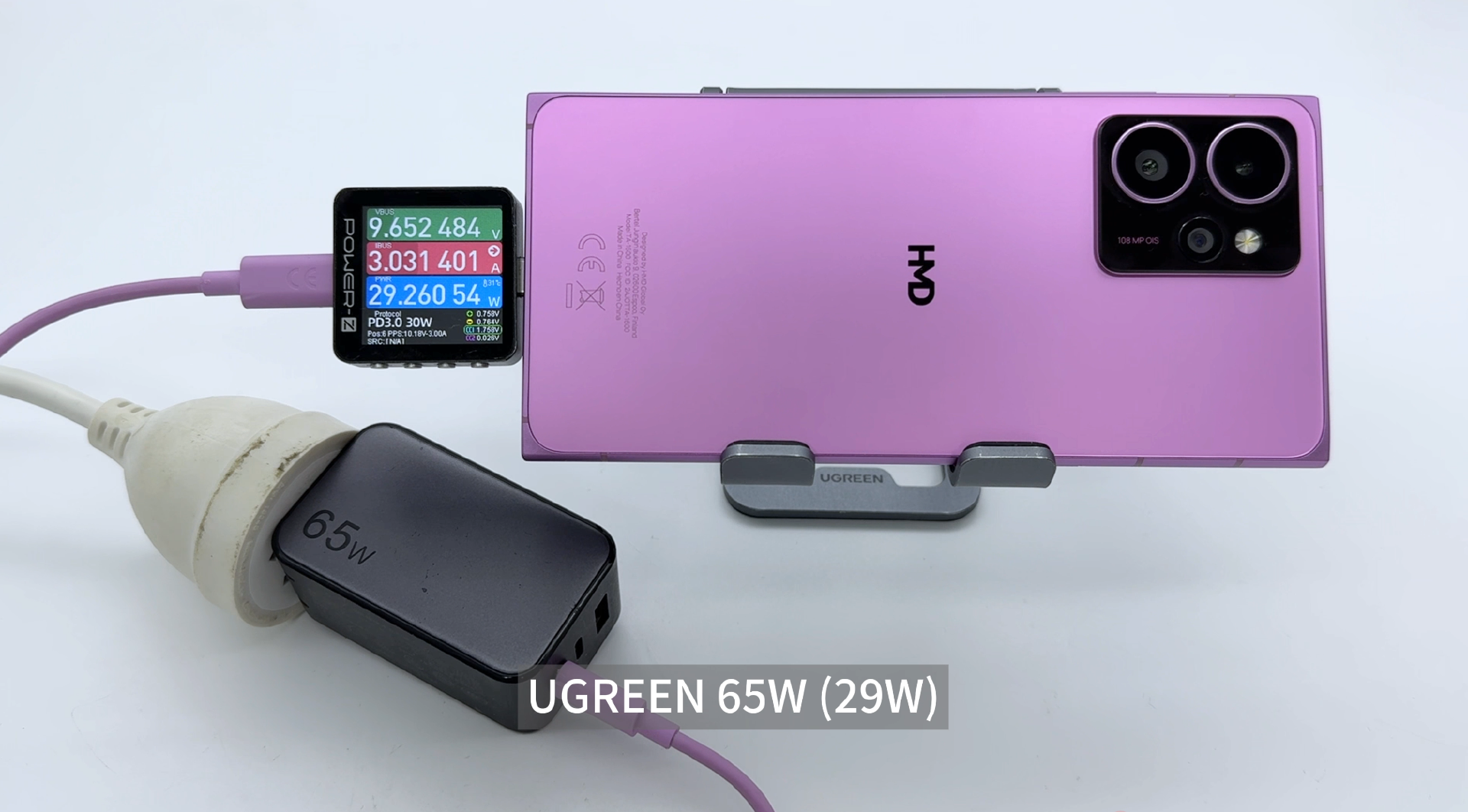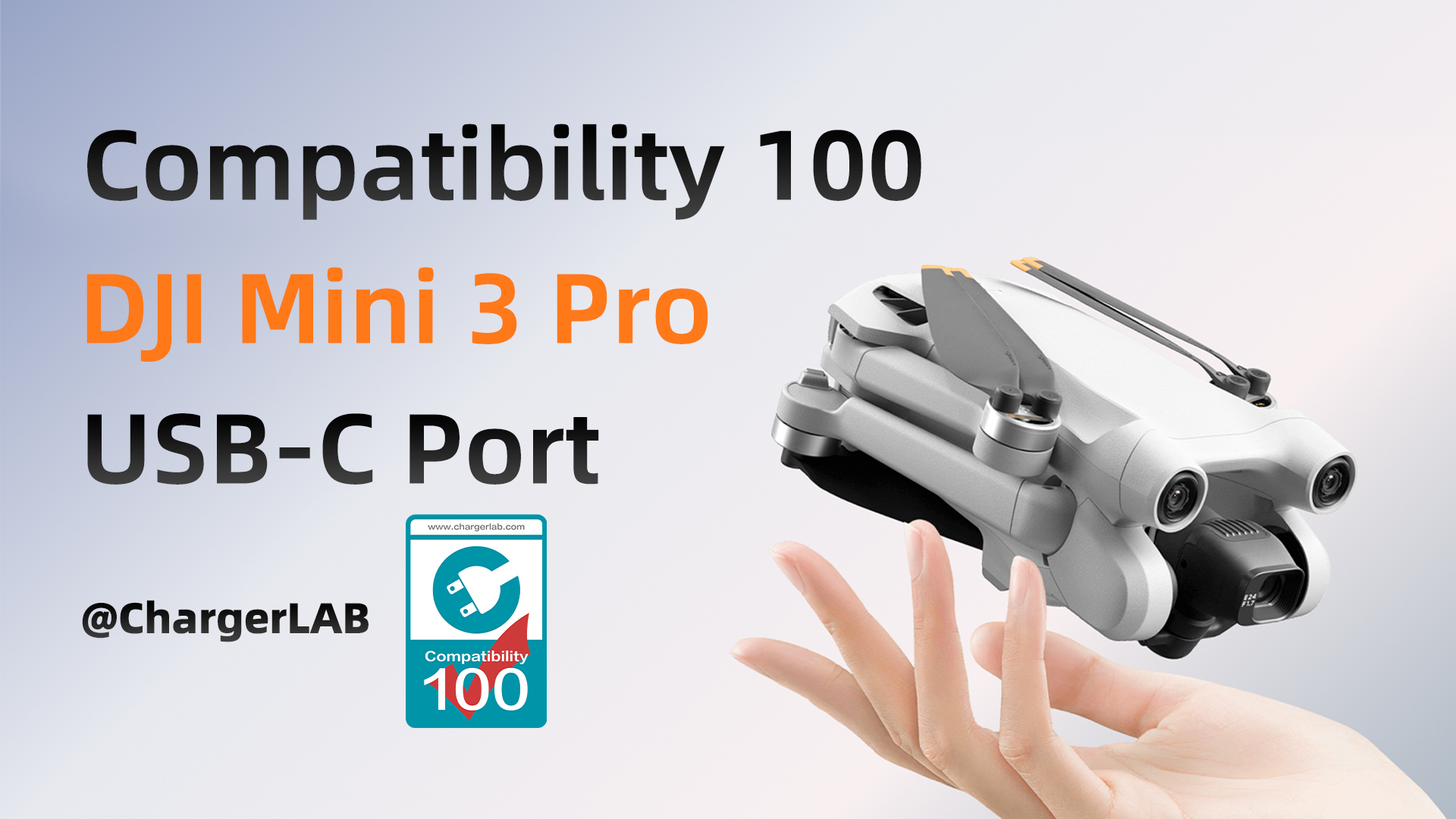Introduction
2023 has been a big year for handheld gaming PCs. Ayaneo and GPD made big updates, Asus introduced the ROG Ally in the spring, Valve gave us the new Steam Deck OLED, and now, at IFA, Lenovo's stepping in with their Legion Go to join the competition.
The Lenovo Legion Go uses the powerful AMD Ryzen Z1 Extreme processor, just like the ROG Ally. Its main highlight is the huge 8.8-inch IPS screen, offering a 2560x1600 resolution (also called 2K) and an impressive 144Hz refresh rate. And we made a ChargerLAB Compatibility 100 video explaining the console. Now, we're offering a detailed written breakdown for better understanding of its charging capabilities.
Charging Compatibility Test
Next, ChargerLAB will conduct a comprehensive test on the compatibility of this product's bottom USB-C port. We will evaluating its performance with a selection of more than 100 charging devices. These devices include Lenovo chargers, third-party chargers, power banks and power stations, aiming to cover the majority of users' charging scenarios.
And it's worth noting that the USB-C port has a maximum input power of nearly 100W, surpassing the performance of the original charger by a significant margin.
Lenovo Chargers
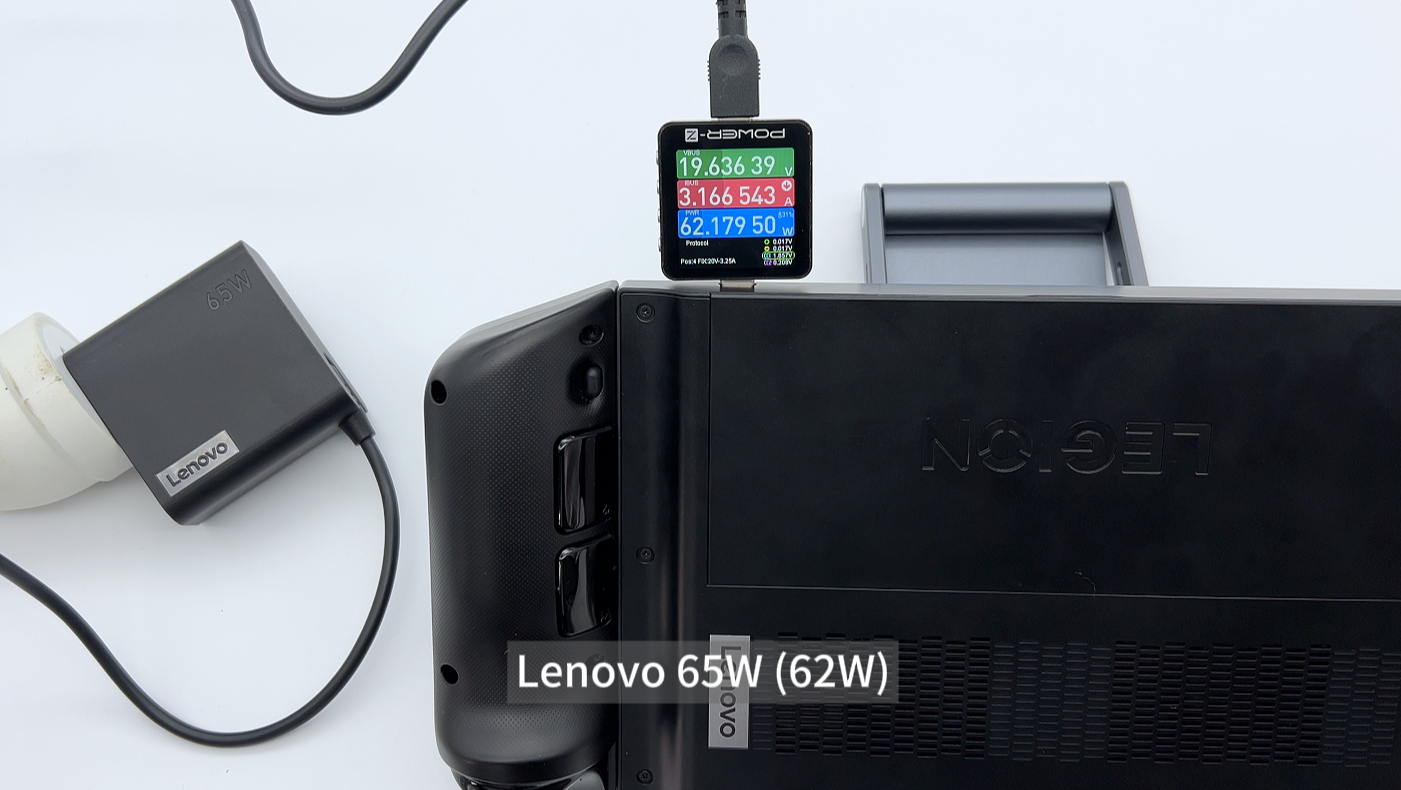
Firstly, charging the Lenovo Legion Go with the original 65W charger results in an input power of 19.64V 3.17A 62.18W.
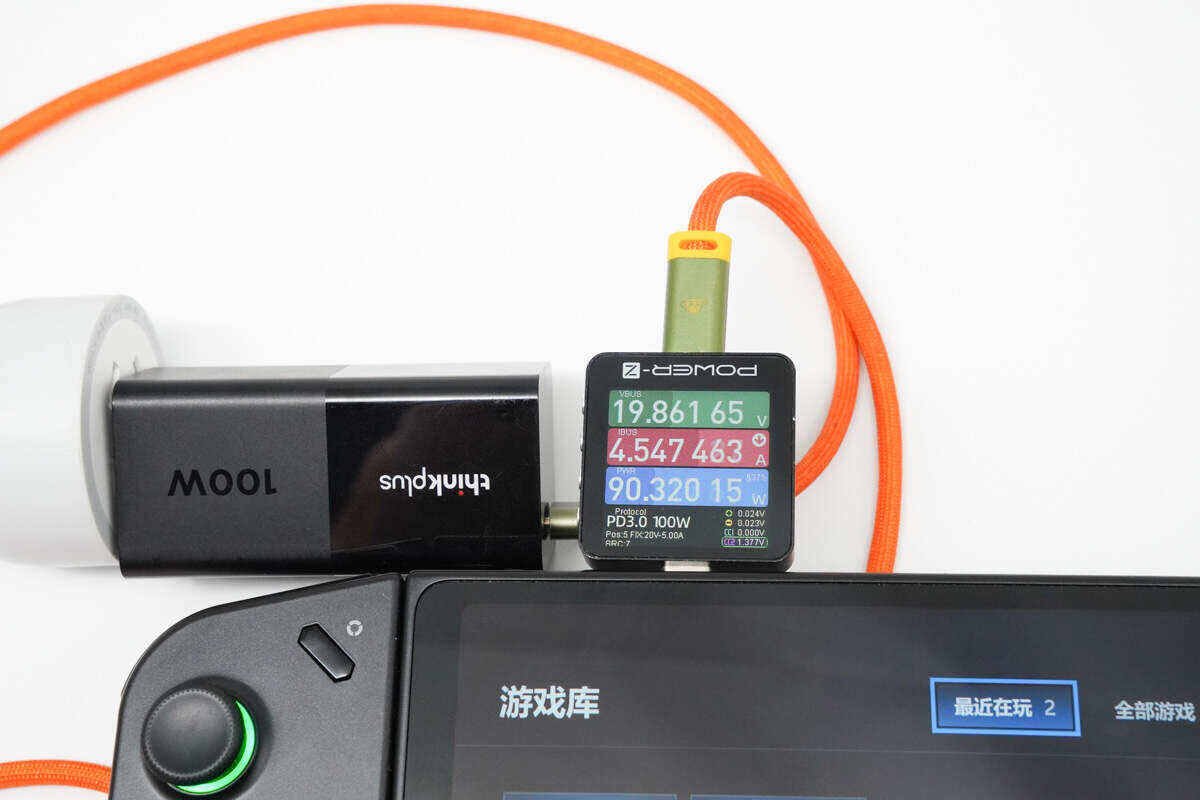
Switching to the Lenovo Thinkplus GaN 100W charger increases the power to 19.86V 4.55A 90.32W, as mentioned earlier.
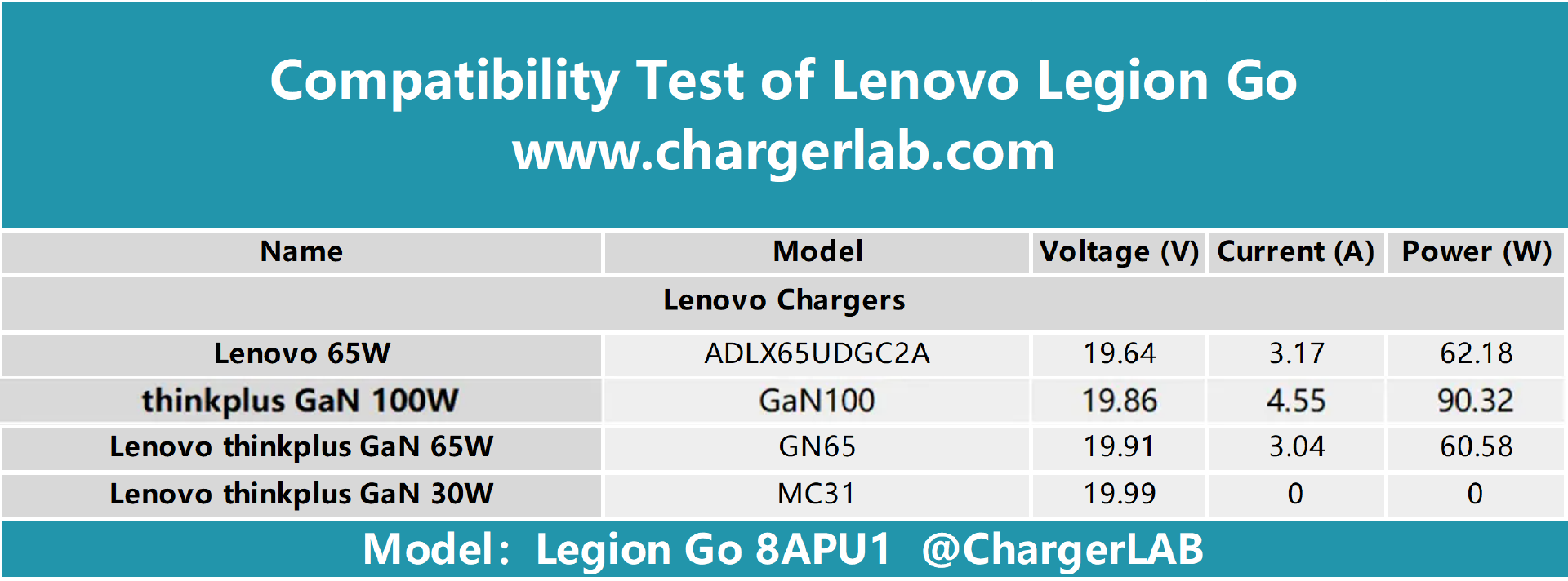
Lastly, testing with the 65W and 30W versions from the same series, the 30W charger fails to charge the device normally. However, both the 65W and 100W chargers show no anomalies, achieving a maximum charging power of 90.32W. As advertised, the device indeed supports PD 100W charging.
Third-Party Chargers
Considering the device's actual maximum charging power surpasses that of the original charger, third-party charger testing becomes crucial. Additionally, all tests utilize a 100W USB-C to USB-C cable to ensure consistency.
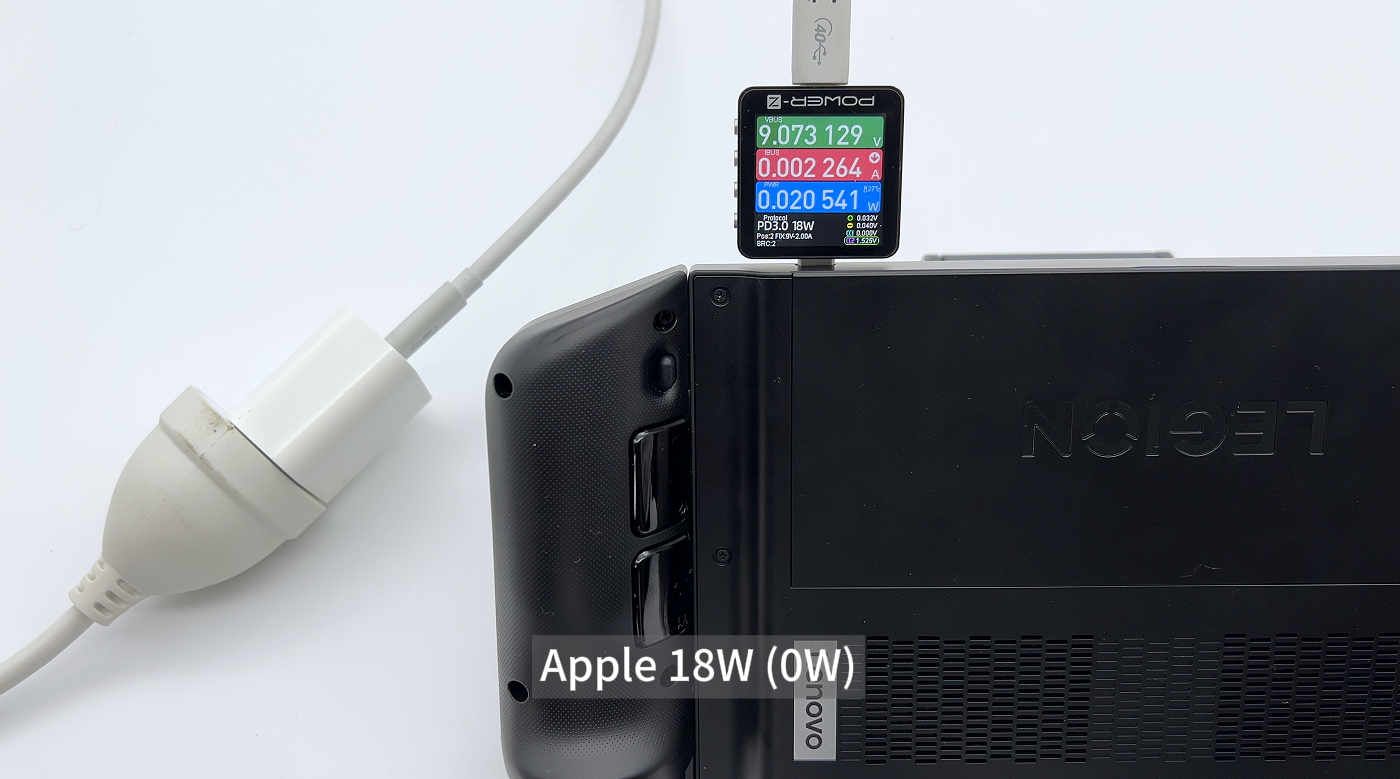
The Apple 18W charger fails to charge the Legion Go.
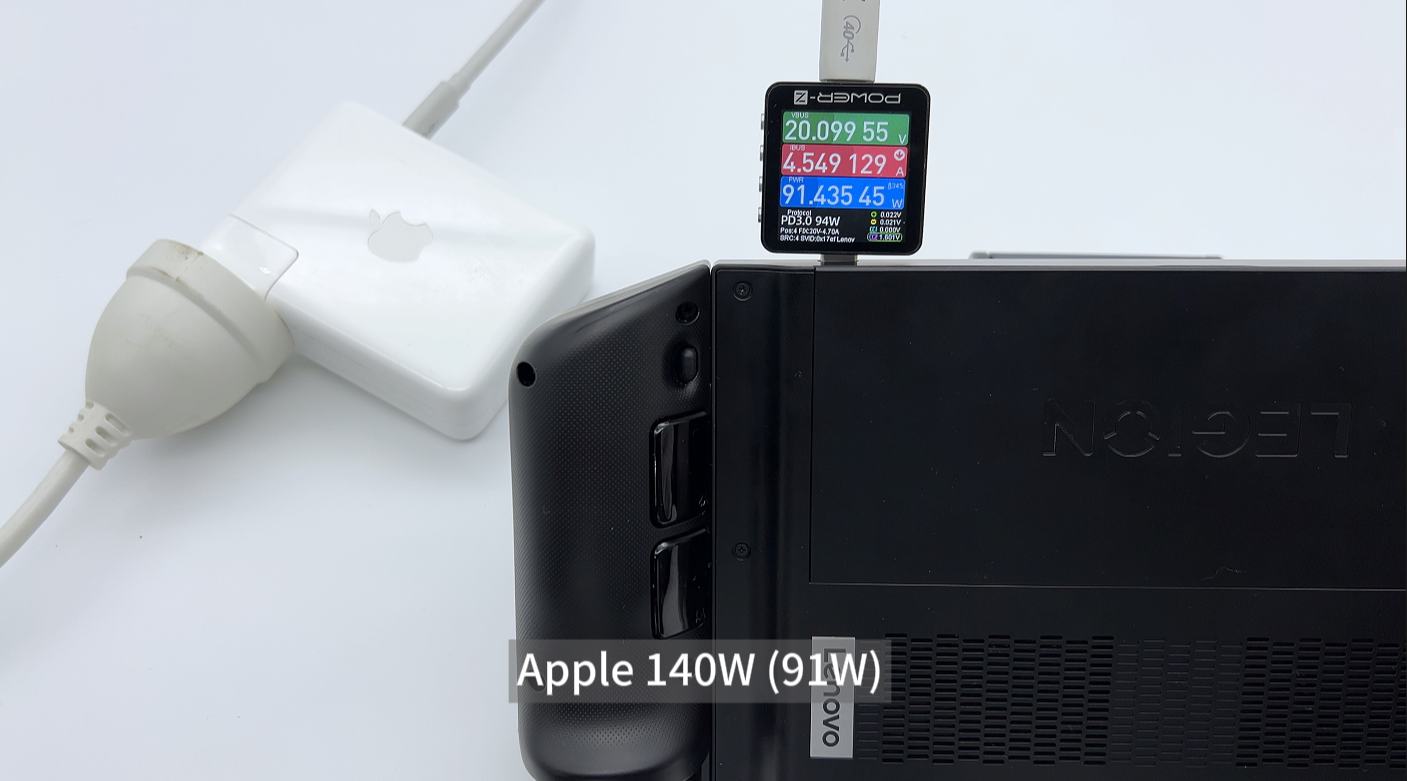
However, the Apple 140W charger not only charges normally but achieves a power of 20.1V 4.53A 91.43W.
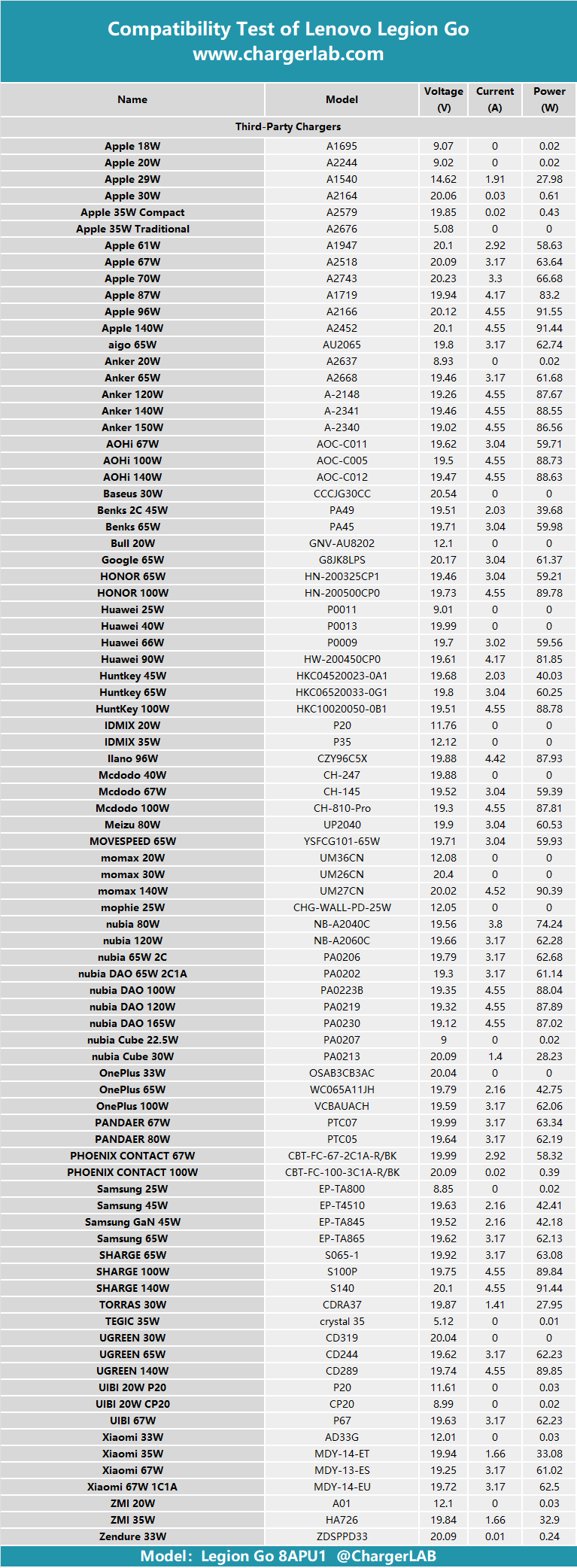
Summarizing the charging data when paired with high-spec charging cables, many chargers below 40W, including common ones like Apple 20W, 30W, 35W, Samsung 25W, and Baseus 30W, cannot charge the device. Conversely, higher-power chargers exhibit normal compatibility, just like the Nintendo Switch.
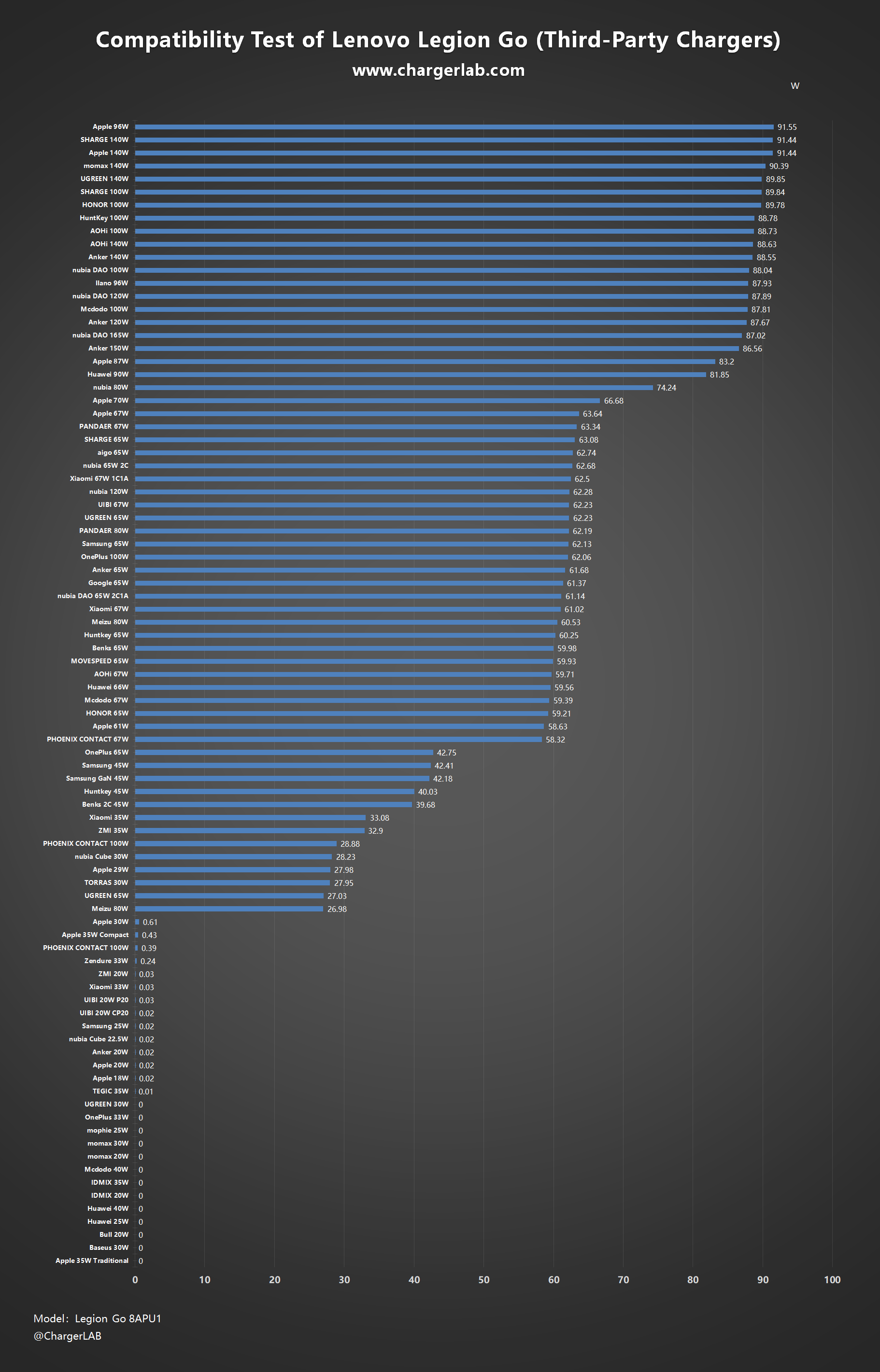
Plotting the charging data as a bar graph accentuates this phenomenon. Notably, the Apple 96W charger outputs the highest power at 91.55W. Chargers in lower PD power levels exhibit suboptimal charging power. Hence, users with higher charging needs are strongly recommended to opt for third-party high-power PD chargers (supporting PD 45W and above), which are likely to meet the device's charging requirements.
Power Banks
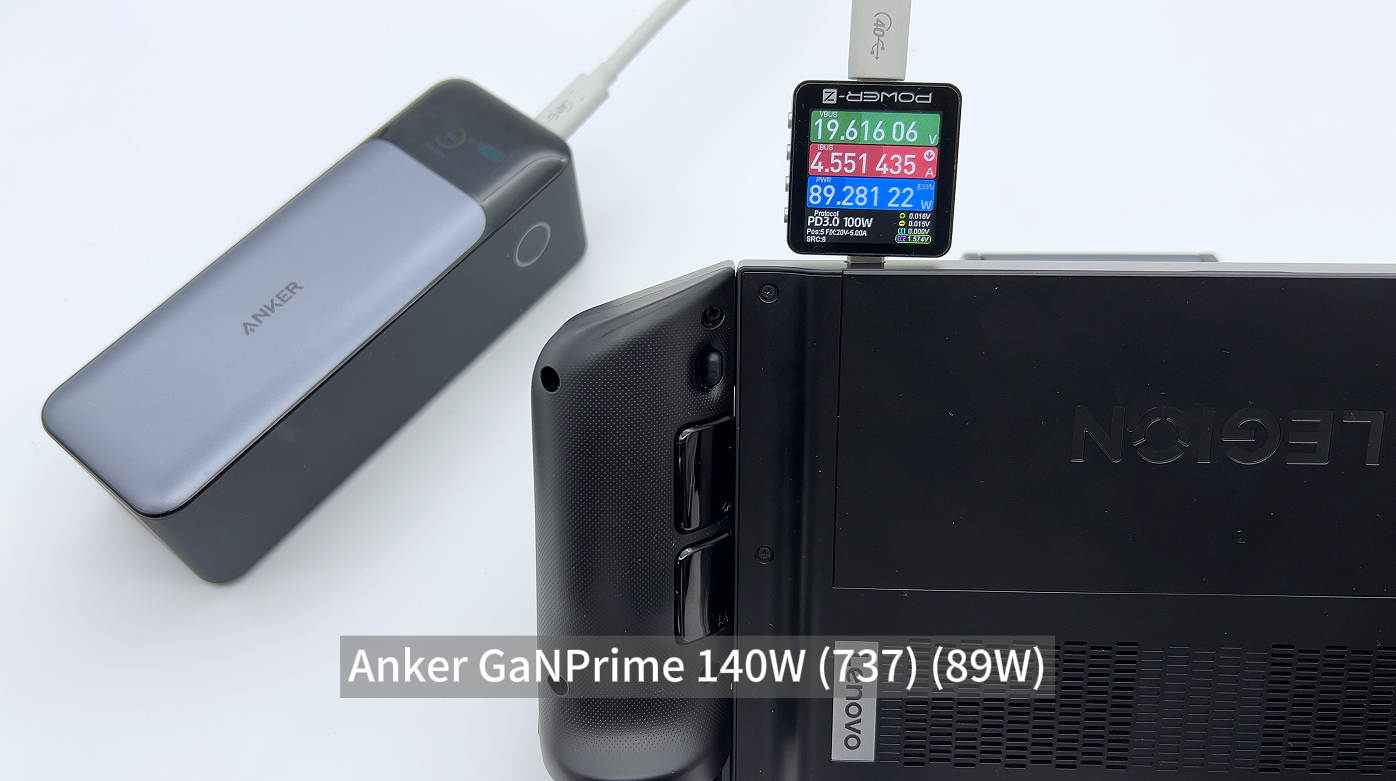
In terms of power banks, utilizing the renowned high-performance Anker 140W PD3.1 Power Bank with its USB-C1 port charges the device at an input power of 19.62V 4.55A 89.28W.
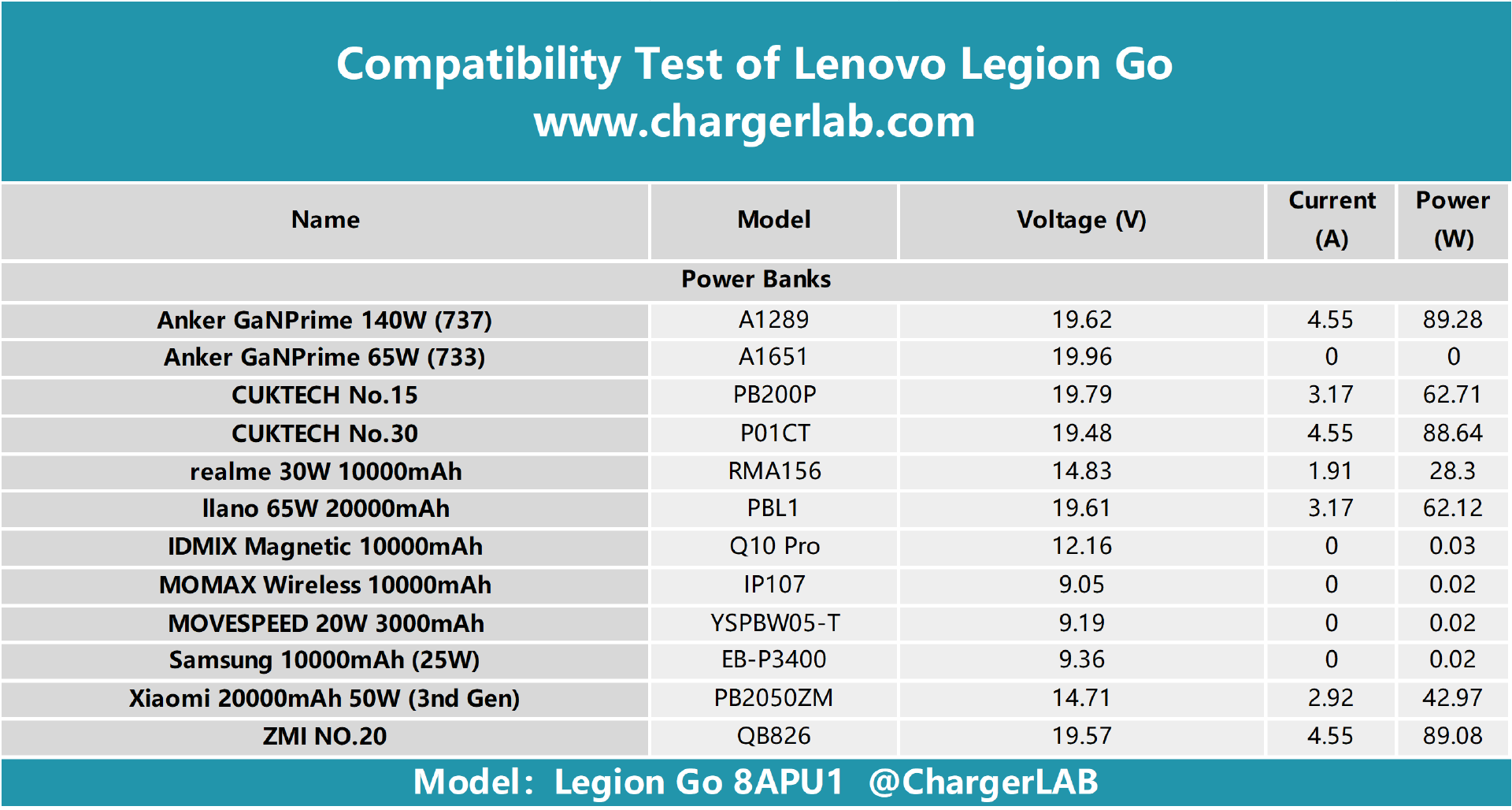
Summarizing the test data in a table, the Legion Go's charging behavior aligns closely with a wide range of third-party chargers, with non-charging instances concentrated among low PD power chargers. Surprisingly, even the Anker 65W Power Bank fails to charge normally.
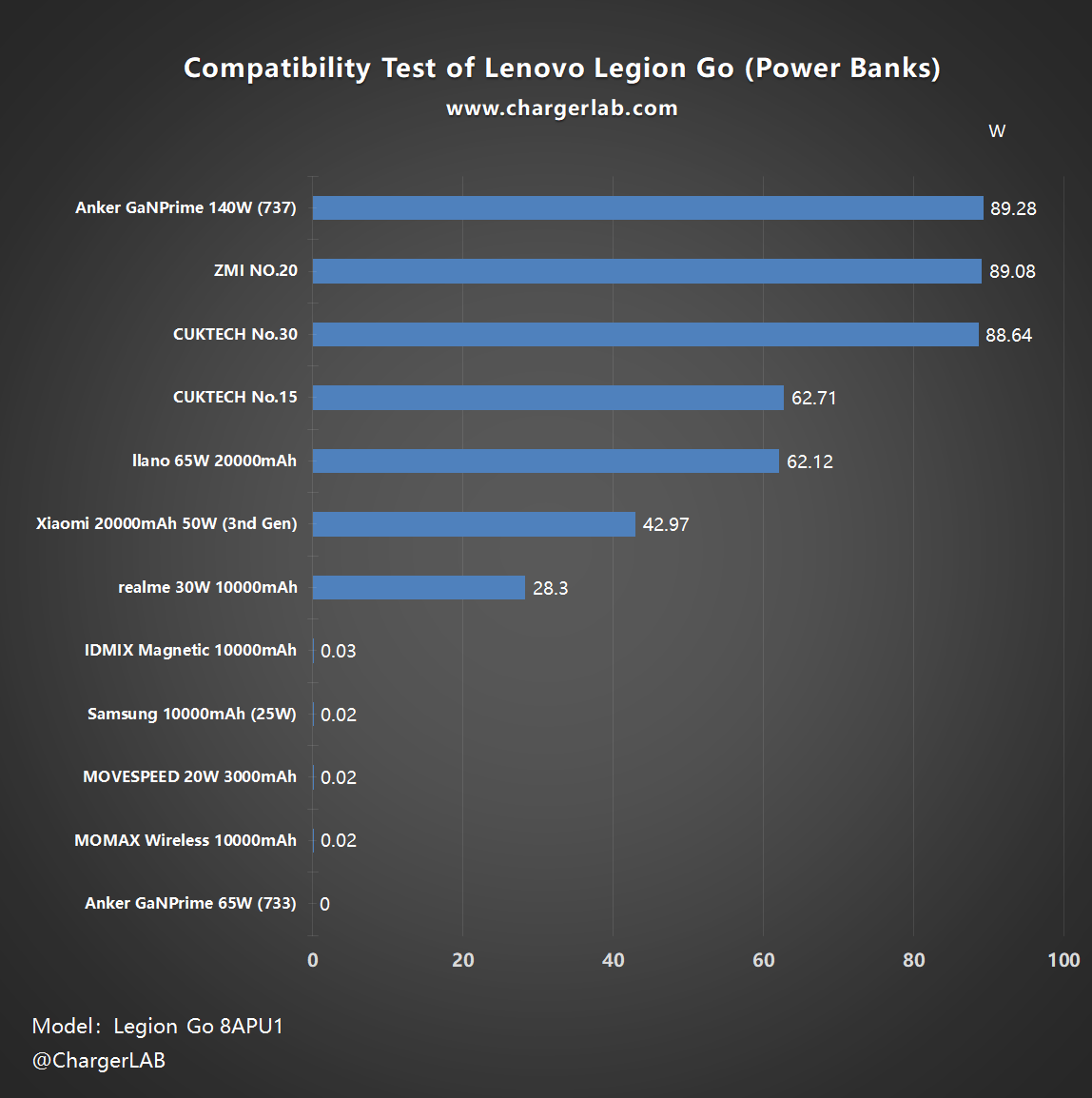
Plotting the charging power data into a bar graph illustrates that, with a few exceptions, the device maintains a charging power of no less than 40W during normal charging, peaking at around 90W.
Power Stations
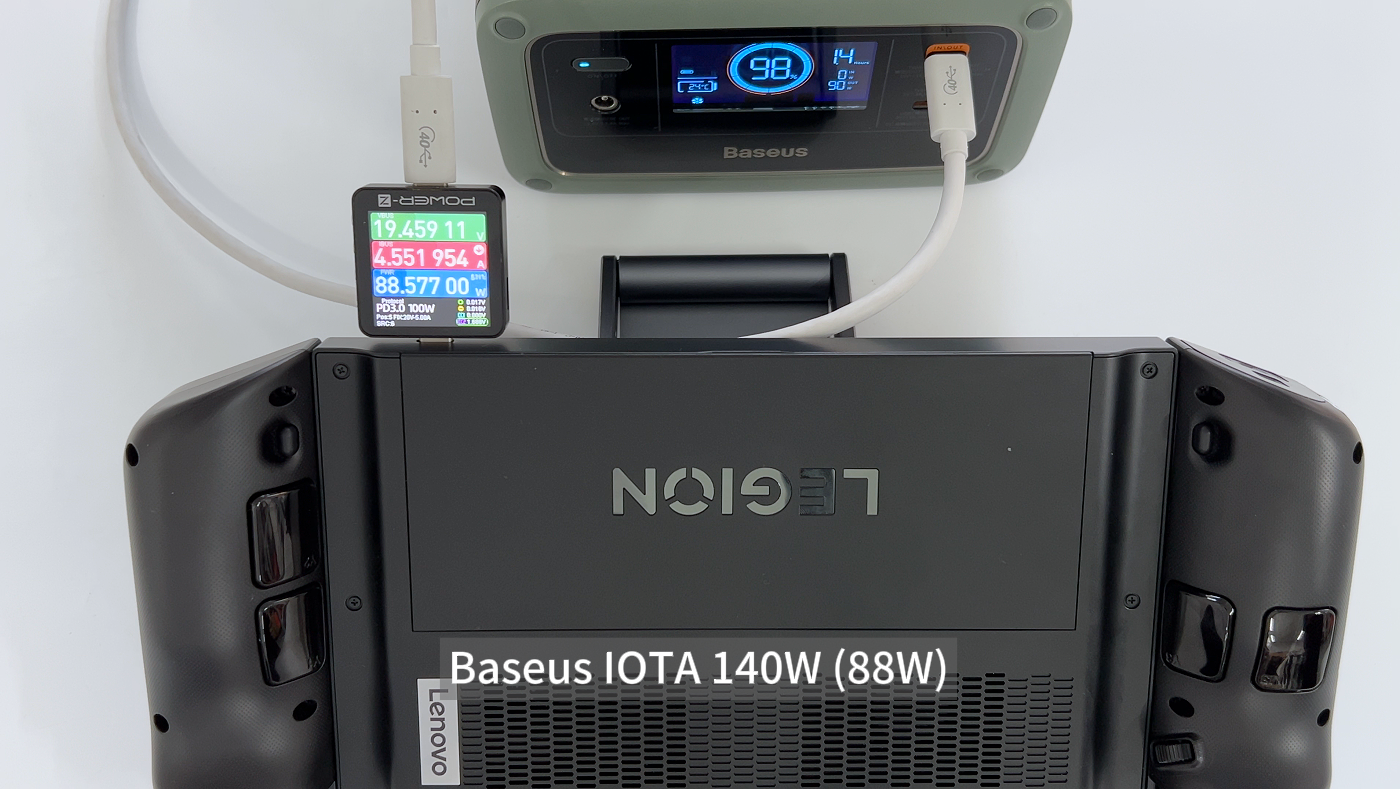
Finally, exploring power stations, the Baseus IOTA 140W portable power station with its USB-C1 port provides a power of 19.46V 4.55A 88.58W to the Legion Go.
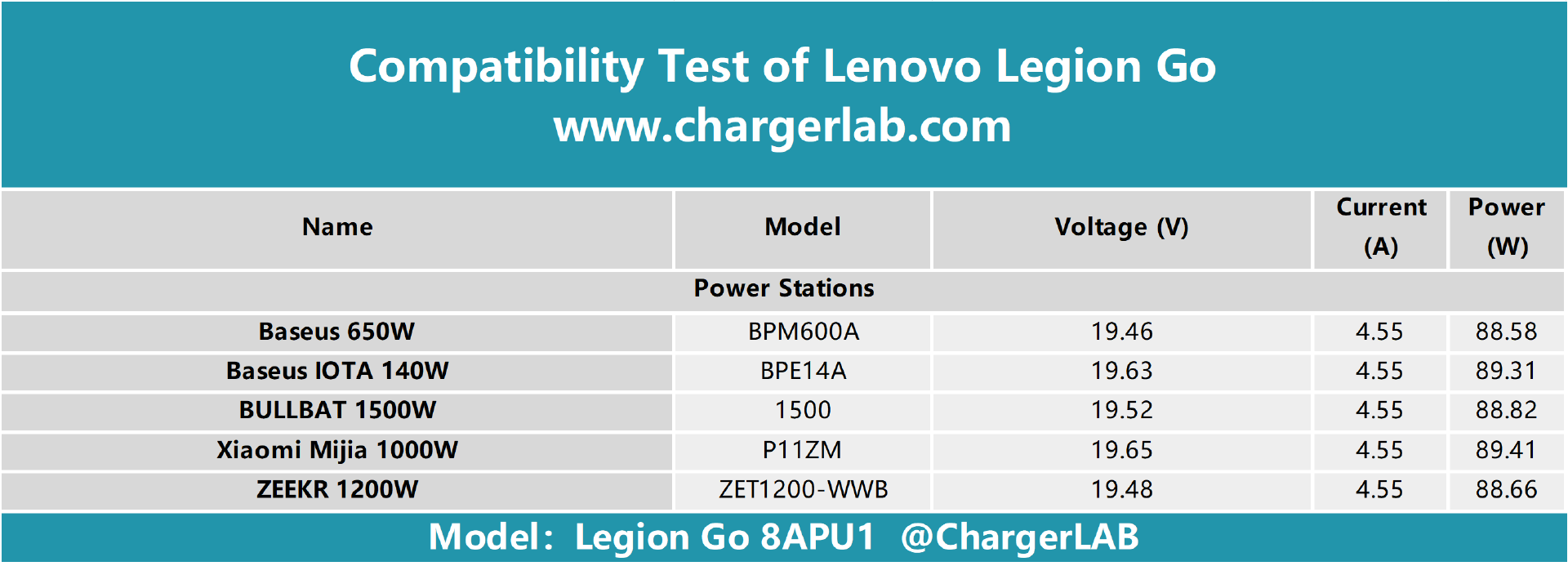
Summarizing the test data in a table, most portable power stations, being a high-spec category themselves, offer at least one USB-C port supporting PD 100W or higher. Hence, no compatibility issues arise, with power outputs hovering around 89W.
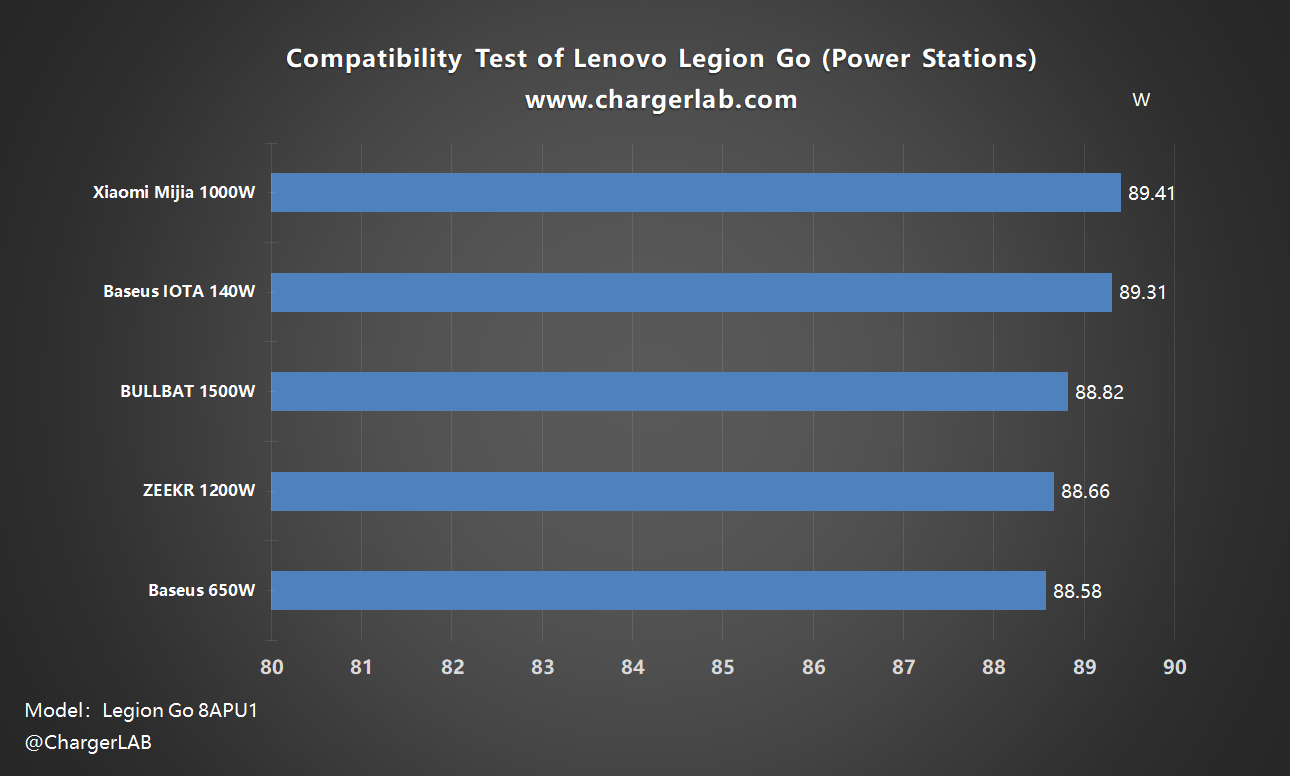
Visualizing the charging power data in a bar graph emphasizes this pattern. Additionally, for the very few portable power stations with only one PD 65W USB-C port, the charging power shouldn't be lower than 60W, adequately meeting demands for intense gaming while charging.
Summary of ChargerLAB
Regarding user experience, the Lenovo Legion Go impresses with its top-notch performance and visual immersion. Its innovative FPS mode adds a creative touch, enhancing the gaming experience. However, the tactile aspect leaves a bit to be desired due to its considerable weight, slightly impacting the overall handling and comfort during extended use.
Back to charging compatibility, the Lenovo Legion Go exhibits exceptional performance with higher-power PD chargers, surpassing the capabilities of its original charger. However, it's crucial to note that several lower-powered chargers, typically below 40W, face compatibility issues, failing to charge the device effectively. Users seeking optimal charging performance are recommended to opt for third-party high-power PD chargers, ensuring seamless charging experiences, especially during intensive gaming sessions.
Related Articles:
1. How Fast ASUS ROG Ally (Z1 Extreme) Is Charged? - ChargerLAB Compatibility 100
2. Teardown of Lenovo Legion 140W PD3.1 USB-C GaN Laptop Charger (LA140)
3. Charging Compatibility Test of Nintendo Switch OLED Model (20-100W)

